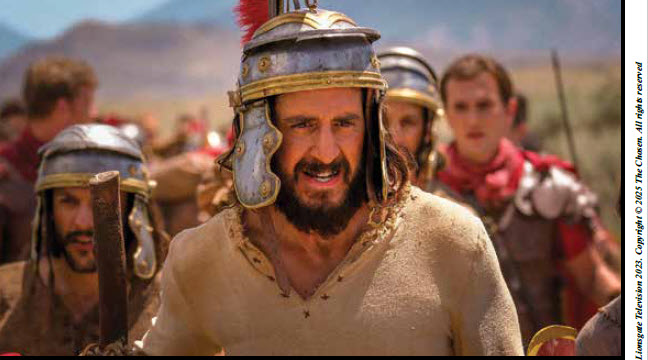 By: Danny Moon
By: Danny Moon
Simply put, a calorie is a unit of energy. Calories indicate the energy content of the food and beverages you eat and drink. Understanding calories can help you make educated decisions about your diet and exercise.
There are three primary sources of calories in the human diet. They come from the three macronutrients: carbohydrates, fat, and protein. Carbohydrates are the primary source. They provide four calories per gram. Fat comes in second and offers more than twice as many calories, at nine per gram. Protein is the third source, which delivers four calories per gram. (Some countries use kilojoules instead of calories to measure food energy. This article uses calories. But here’s the conversion rate you need—1 calorie = 4.2 kilojoules.)
A common question is whether all calories are created equal. On paper, it’s hard to argue why they wouldn’t be identical. Remember, calories are a measurement. So a calorie from fat should provide the same energy as a calorie from protein. But really, this question should be posed to the gut.
Your gut absorbs almost all the calories from the carbohydrates, protein, and fat you eat. But your gut treats fiber (a type of carbohydrate) differently than the other macronutrients. Instead of taking on all the calories fiber has to offer, your gut will only absorb about half. That’s because fiber is difficult for the gut to digest completely.
On top of that, fiber quickly absorbs water. This process can help you feel fuller for longer and enables you to cut back on how many calories you eat—or at least absorb. Combined with the other health benefits of fiber, it’s no wonder that The American Heart Association recommends adults consume 25 grams per day.
Your Body at Rest
Most people are familiar with the idea that exercise burns calories. However, your body also expends energy by merely existing.
The amount your body uses at rest is called your “basal metabolic rate” or BMR. It makes up for two-thirds of your daily calories burned.
This is a significant chunk because metabolism requires a lot of energy. Metabolism includes processes like body temperature regulation, blood circulation, and cell growth to name a few. Your brain chews up about 20 percent of your calories—about 450 for an average diet—per day
If you’re counting calories, you can think of these as freebies. Understanding the calories your body burns to maintain itself will help you plan your diet and exercise better.
How Many Calories Should You Eat?
You need to consume a certain number of calories daily for your metabolic processes to occur effectively and for your body to work correctly. For men, this number is roughly 2500 calories per day. Women need approximately 2000 calories per day.
These daily requirements fluctuate depending on a few factors—age, sex, weight, and activity level.
- Age: Infants and children require fewer calories than adults. As adults age through their lifespan, energy requirements decrease. This is true, in part, because the activity levels of older adults tend to decrease with age.
- Weight: Calorie need is a function of weight. A larger person needs more calories because carrying more weight takes more effort and requires more energy. They also have more living tissue to support them. This is also true in the opposite direction—smaller person, fewer calories.
- Sex: Men typically require more calories per day on average because their BMR is higher.
- Activity level: Athletes are a great illustration of the effect of activity level on calorie needs. Calories burned through intense physical activity need to be replaced to ensure the body’s metabolism can continue unaffected. That’s why athletes take in more calories and stay fit.
When determining your unique calorie needs, consider whether you’re trying to lose, maintain, or gain weight. Imagine you’d like to lose weight. Losing one pound of body fat is the equivalent of burning 3,500 calories. So if you either burn or cut out 500 calories per day, you would lose one pound per week.
Here are some other ideas for how to be more mindful of your calorie intake:
- Add more fluids to your meals. Maybe start with soup or increase your water intake. Either way, consuming more fluids can help you feel full.
- Increase your fiber intake. Fiber is not easily digested and, as a result, the gut only absorbs half of the fiber’s calories. Additionally, fiber will keep you feeling full for longer.
- Add protein to your breakfast(if this isn’t already part of your routine). Protein will help you feel full for longer. Protein can also help support lean body mass, which will help increase your BMR.
- Limit empty calories when possible. These are usually found in added sugar and solid fats. While these foods provide energy, they lack important nutrients.
- Read nutritional labels for macronutrient and calorie content. Pay attention to the number of serving sizes in each package. The nutritional information represents only one serving.
Understanding Calories and Exercise
Now that you’re familiar with the calories in your diet, let’s explore how calories relate to exercise.
You already know exercise is the best way to burn calories. And burning calories is one way to manage your body weight. Vigorous exercise can burn as much as 20 calories per minute.
But this type of effort is difficult to maintain for a long period of time. The good news is that sustained, moderate activity burns the most calories.
The Relationship between Calories and Bodyweight
Understanding calories from your diet (calories in) and those you burn (calories out) makes weight management a matter of simple math. There’s still a lot of effort, but it’s all about balancing calories in and calories out.
You can control calorie intake by paying attention to your diet. And you can change how many calories you burn by incorporating a range of physical activities into your lifestyle.
If you’re consuming less than your daily calorie requirement, you will likely lose weight. If you’re matching the requirement, you should maintain your current weight. And if you’re consuming significantly more than your baseline requirement, you will likely gain weight.
Weight loss: Calories In – Calories Out < 0
Weight maintenance: Calories In – Calories Out = 0
Weight gain: Calories In – Calories Out > 0
Recall the factors that will influence your daily calorie needs (age, weight, sex, and activity level). These affect your “calories in” and, consequently, how many calories you need to expend to reach your goal. There are many calorie calculators available online that take these factors into account and that can help you determine the activity changes and calories needed to manage your weight.
Which Is the Most Important Side of the Calorie Balance Equation?
Exercise only burns about 100-400 calories per 30 minutes of activity—or about 200-800 calories per hour; the average person needs to consume approximately 2,250 calories per day. Probably the easier side of the equation to immediately affect is “calories in.” It is hard work to burn 500 calories through exercise. Yet it’s pretty easy to put down the fork—or stop eating the empty calories through junk food—and consume 500 fewer calories every day.
This isn’t to underscore the health benefits of exercise. Everyone should be exercising at least 30 minutes per day at least four days a week. This will help you experience the health benefits of exercise.
To make the easiest impact on your weight, slowly begin to consume fewer calories. If you have a hard time restricting your calories at first, increase your exercise routine accordingly. But to make the quickest impact on your weight, work on both sides of the calorie balance equation. Combine eating less, making healthy food choices, and increasing your daily exercise routine.
Putting It All Together
Developing a healthy regimen of balanced meals and exercise can be daunting. Understanding calories can be a big help. And fortunately, there are many resources available to make this process easier. Start by learning about your energy needs based on your age, sex, weight, and activity level. This gives you a great starting point.
Gather the information you can from food packaging to make educated decisions based on the labels. This will help you meet your daily calorie requirements while building out your snacks and meals. Then, based on your weight management goals, you can decide how many calories you should be consuming compared to your baseline energy requirement.
Finally, determine how many calories you can burn based on the physical activities you enjoy. This will give you an idea of how long and how often you should exercise to achieve your weight management goals.
Understanding calories can be the first step to a healthier you. No matter what your health and fitness goals are, you’re now armed to navigate the decisions more confidently.
By: Danny Moon








 June 20, 2025
June 20, 2025



